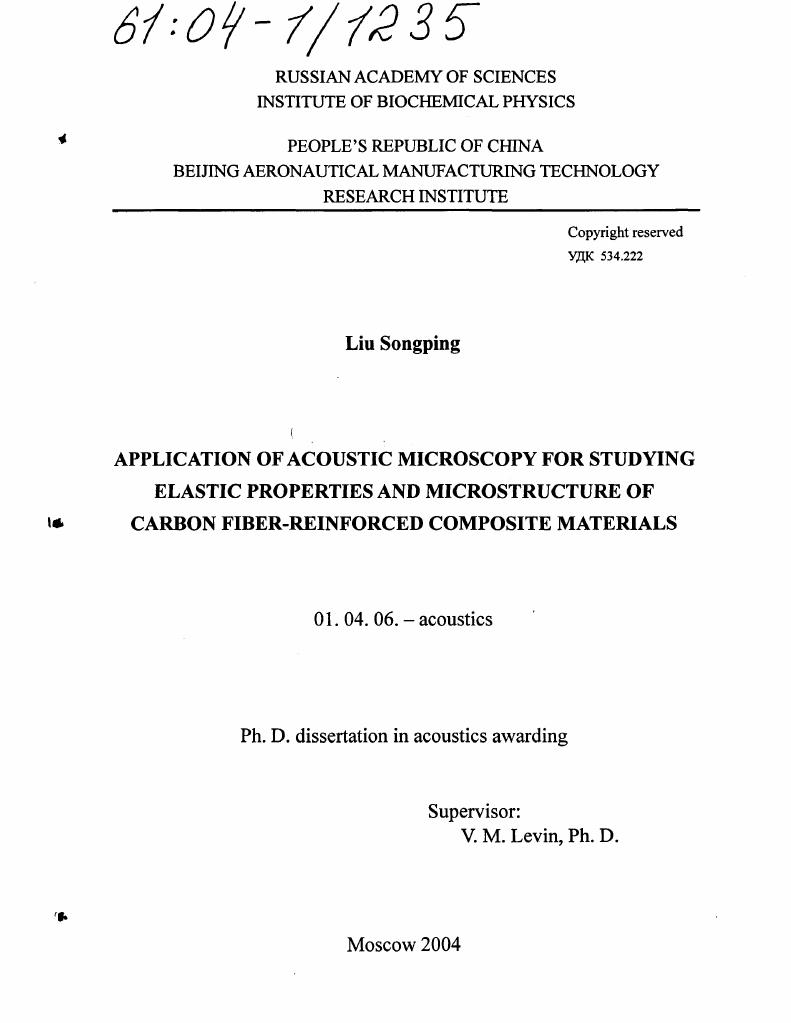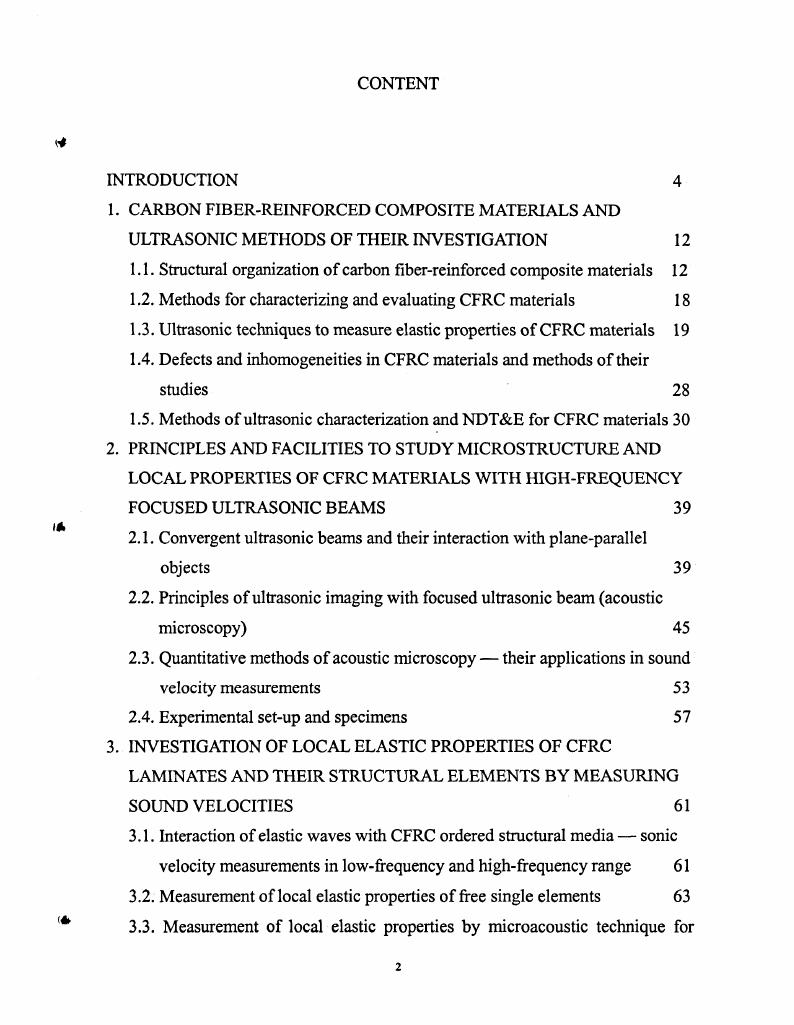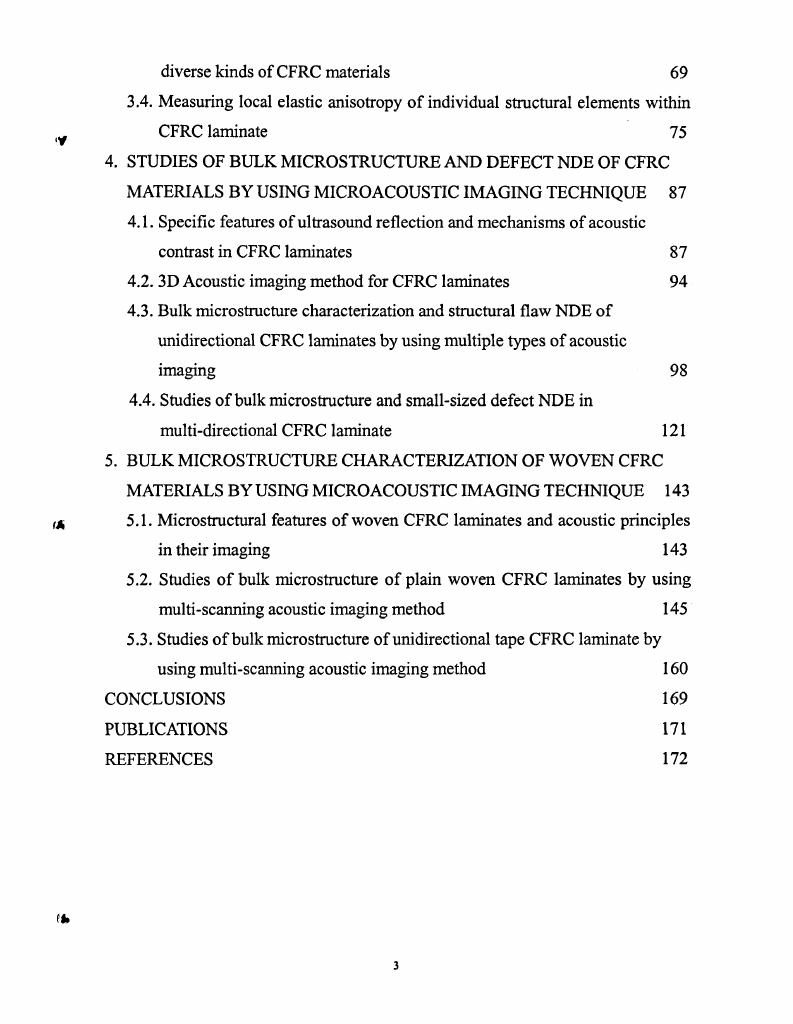Применение акустической микроскопии для изучения упругих свойств и микроструктуры композитных материалов, армированных углеродными волокнами

- Автор:
Лю Сунпин
- Шифр специальности:
01.04.06
- Научная степень:
Кандидатская
- Год защиты:
2004
- Место защиты:
Москва
- Количество страниц:
176 с. : ил.
Стоимость:
700 р.250 руб.
до окончания действия скидки
00
00
00
00
+
Наш сайт выгодно отличается тем что при покупке, кроме PDF версии Вы в подарок получаете работу преобразованную в WORD - документ и это предоставляет качественно другие возможности при работе с документом
Страницы оглавления работы


Рекомендуемые диссертации данного раздела
| Название работы | Автор | Дата защиты |
|---|---|---|
| Аппаратно-программный комплекс и способы оценки параметров сигналов для анализа дыхательных звуков человека | Костив, Анатолий Евгеньевич | 2008 |
| Исследование акустических полей направленных источников в регулярных и нерегулярных океанических волноводах | Шарфарец, Борис Пинкусович | 2002 |
| Скалярно-векторное описание акустических полей | Дзюба, Владимир Пименович | 2003 |